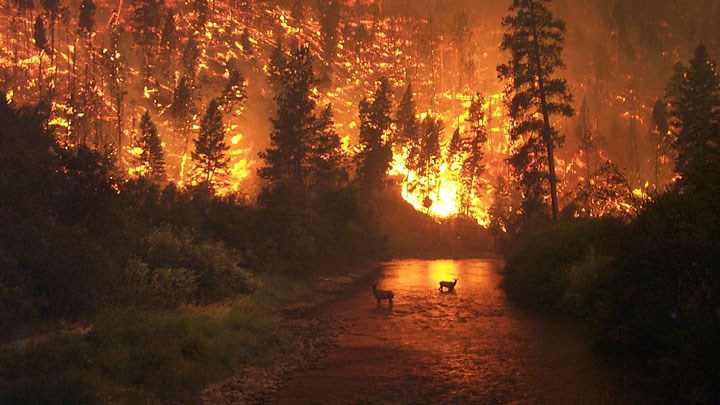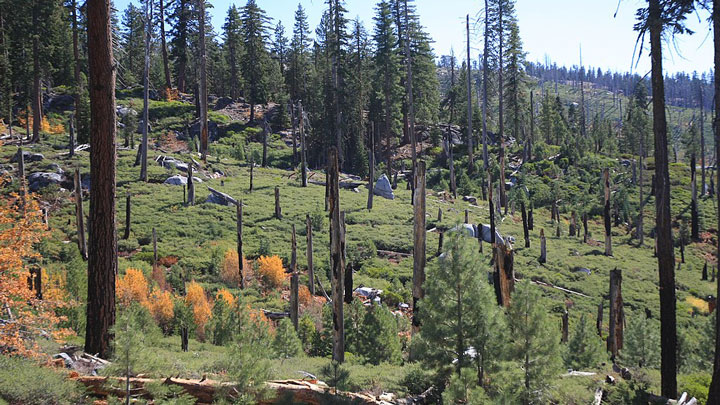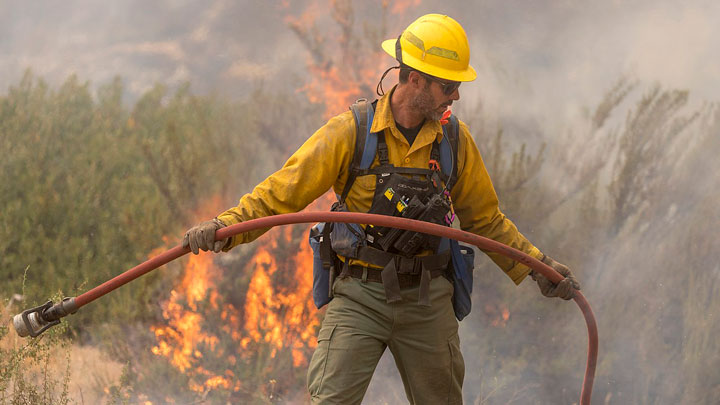
by Karen Mehall Phillips - Friday, March 18, 2022

Catastrophic wildfires concern wildlife conservation groups, lawmakers and state and federal agencies nationwide as land and wildlife managers strive to assess and balance forest restoration needs with those of habitat conservation. In January, the U.S. Forest Service (USFS) released “Confronting the Wildfire Crisis: A Strategy for Protecting Communities and Improving resilience in America’s Forests,” a 47-page booklet addressing America’s wildfire crisis strategy for 2022 and beyond.
An agency of the U.S. Department of Agriculture that administers the nation’s 154 national forests and 20 national grasslands, the USFS is currently developing a “living” 10-year implementation plan, “working with partners across jurisdictions to change the trajectory of wildfire risk.” To assist with plan development, the National Forest Foundation, chartered by Congress to promote the health and public enjoyment of the 193-million-acre National Forest System, is partnering with it to host virtual roundtable events in the nine USFS regions as well as nationally to engage its employees and partners. The USFS and Intertribal Timber Council also are making plans for a tribal roundtable. Scheduled from February through May, the roundtables aim to strengthen opportunities for the USFS, state and tribal governments, federal agencies and non-governmental organizations to work together.
In sharing input, goals and suggestions for implementation timelines, the roundtables will be a forum for USFS leaders and partners to identify needs, gauge ongoing interest and determine ways to leverage it. Discussions will be included in reports designed to inform the implementation plan moving forward.
Participation is by invitation to make sure the roundtables provide critical dialogue and is capped at 60 USFS and 60 partner attendees per regional and national event. Attendees include a “mix of partners and employees whose programs and experience directly relate to or are affected by increased wildfire risk and fuels-reduction efforts.”
In addressing topics such as hazardous fuel reduction and the frequency and impact of wildfires on our national forests, it is no surprise the events are drawing representatives from American Wildlife Conservation Partners, (AWCP), a 50-plus-member coalition representing the interests of America’s millions of hunter-conservationists, professional wildlife and natural resource managers, outdoor recreationists, conservation educators and wildlife scientists. The AWCP includes non-governmental organizations from the National Rifle Association, Boone and Crockett Club and Dallas Safari Club to species-specific conservation groups such as the Mule Deer Foundation and National Wild Turkey Federation.

As The Wildlife Society, one of the AWCP partner groups, noted last summer, “Wildfire is part of natural processes and can have regenerative effects on many ecosystems and habitats. However, large, intense wildfires can destroy habitat and the ecosystem’s ability to regenerate naturally.”
Pointing to how The USFS and raging wildfires can kill wildlife and, at the very least, alter its migration and movement patterns, in 2019 an article posted by the University of Idaho Extension explained that wildfires affect wildlife habitat by altering food, water and shelter—the three things wildlife need the most. “Tender understory plants and shrubs that provide food are lost, and this loss often results in wildlife moving away to areas where food, water, and shelter are more readily available.”

Working with the USFS to promote the roundtables, the National Forest Foundation website explains, “Everyone has a leadership stake in moving from small-scale, independently managed treatments to strategic, science-based, landscape-scale treatments that cross boundaries at the scale of the problem, starting initially with those places most critically at risk.” It welcomes ongoing communication about the 10-year strategy and implementation plan between the USFS, states, tribal entities, and non-governmental partners.
To view the list of scheduled roundtables, click here. For information on topics and discussion questions, click here.
E-mail your comments/questions about this site to:
[email protected]
Proudly supported by The NRA Foundation and Friends of NRA fundraising.
